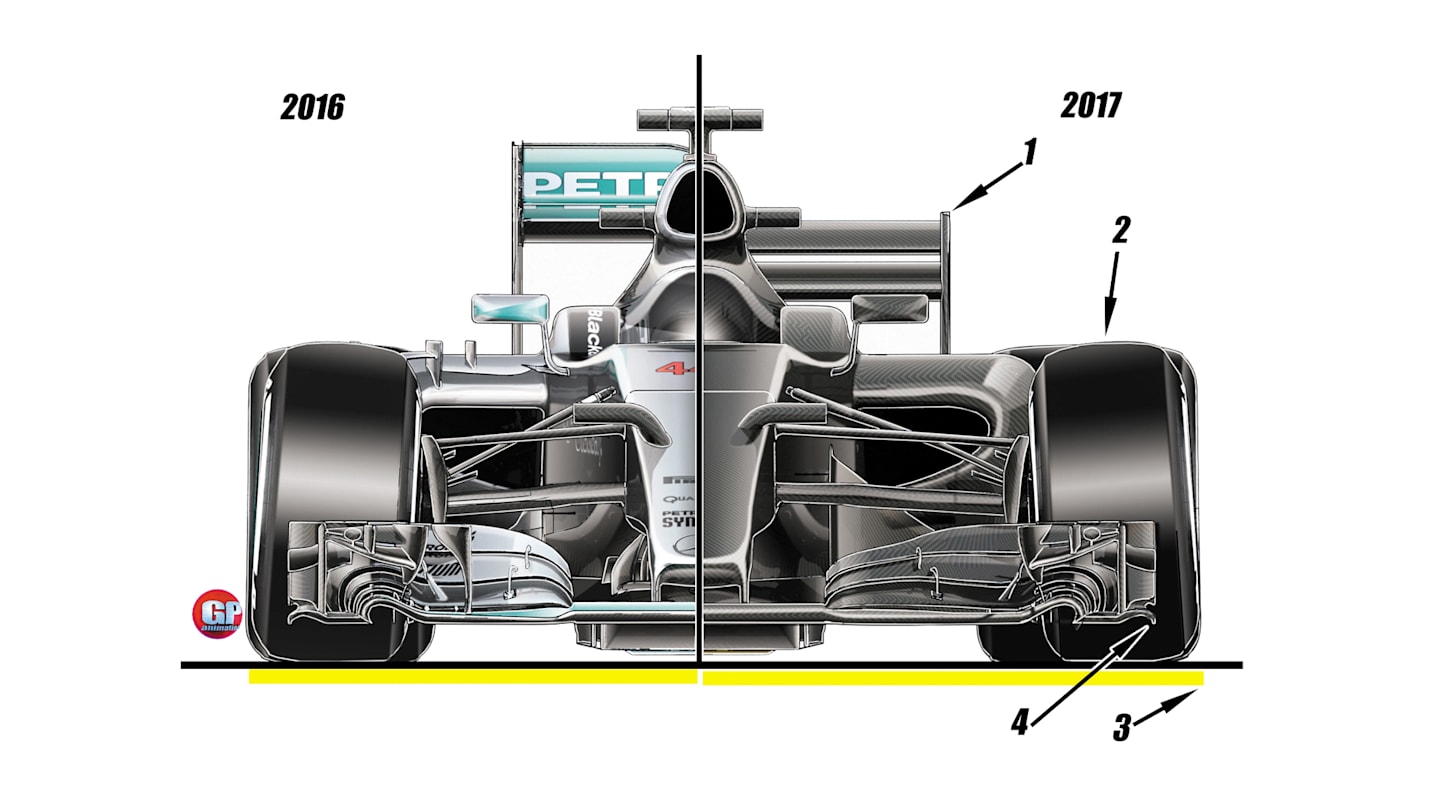
Technical
Future vision - the F1 car, 2017 style
Share

As excitement builds around the start of the 2016 season, Formula One engineers and designers already have one eye firmly fixed on 2017, when significant changes to the F1 rule book will dramatically alter the appearance of the cars, making them both wider and faster. The exact regulations may not yet be finalised, but with the help of drawings from technical illustrator Giorgio Piola, we take a look at how next year’s machines could look if recent proposals come to fruition...
The overhead comparison above highlights the key areas of change. Starting from the front, the nose of the car (1) is 20cm longer than in 2016, while the width of the front wing increases from 165cm to 180cm. However, the wing’s new delta shape means the distance between the front tyre and the endplate (2) remains unchanged, as does the endplate size.
The tyres are wider, with tread width up from 24.5 to 30cm at the front (3) and from 32.5 to 40 at the rear (8). This in itself is expected to make cars around three seconds per lap quicker. Meanwhile, the overall width of the car increases from 140cm to 180cm.
Restrictions on floor surface area means that rearward of the front of the cockpit (5) the car cannot be the maximum 180cm wide for its entire length (6), so there must be a cut-out at some point (7). Another proposal prescribes a minimum body width of 160cm at all points, which means the cut-out cannot be more than 10cm deep. Finally, the rear wing (9) is wider - up from 80cm to 95cm - with a bigger overhang.

© Giorgio Piola
Looking at the 2016 and ’17 cars front-on, we can see that the rear wing is not only wider, but also lower. The drawing above also highlights the increased width of the tyres (2), the car itself (3), and the front wing (4).

© Giorgio Piola
A similar comparison from the rear of the cars again makes clear the lower and wider rear wing (1/2) and the wider rear tyres. It also shows us another change: an increase in the permitted height of the rear diffuser, up from 12.5 to 22cm.

© Giorgio Piola
It is not only the height of the rear diffuser that is different. More importantly, the side-on comparison drawing above shows that instead of starting from the rear axle, the diffuser starts 33cm in front of it (6). As well as the nose (1) and front wing (2) changes, this drawing also shows the return of large turning vanes (3) between the front tyres and the sidepods, as well as highlighting the bigger rear wing (5) with its larger overhang, which will help boost ground effect.
Share
YOU MIGHT ALSO LIKE
Video LIVESTREAM: Catch all the Round 12 action from the season finale of the 2025 F1 Sim Racing World Championship
News ‘We have a duty of care to protect and develop Liam’ – Horner opens up on decision to replace Lawson at Red Bull
Video LIVESTREAM: Watch the action from Qualifying for Round 12 of the 2025 F1 Sim Racing World Championship
Feature TREMAYNE: Japanese drivers have a rich history in F1 – but can Yuki Tsunoda grab his chance and be the best of them all?




